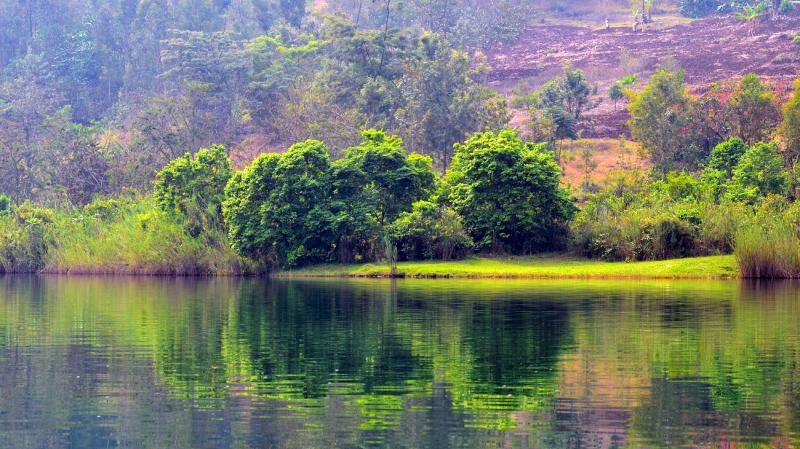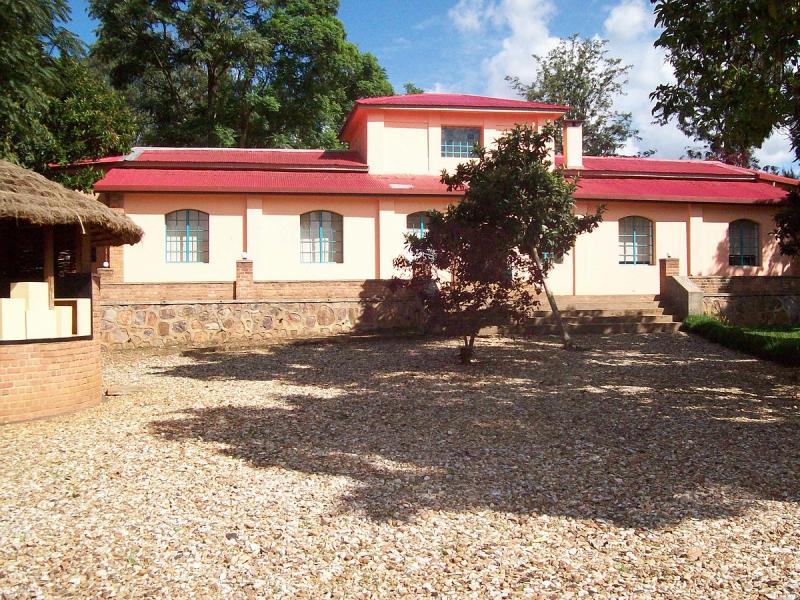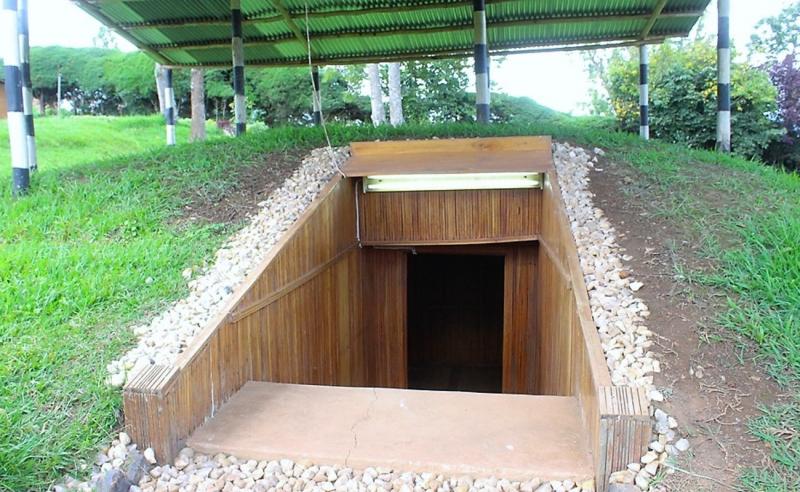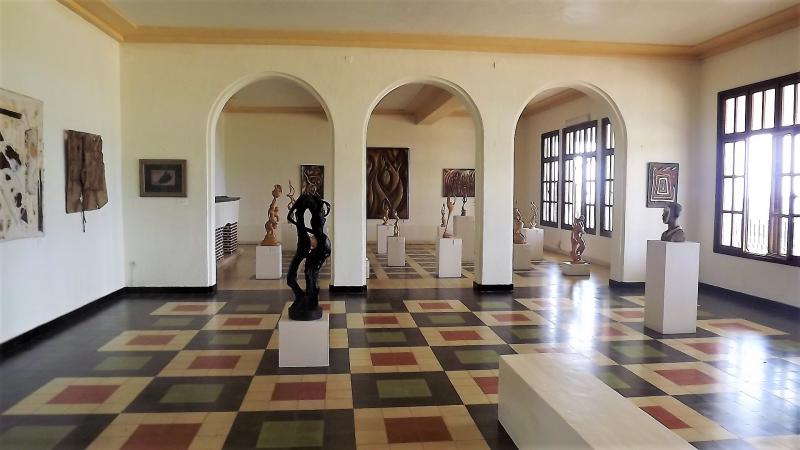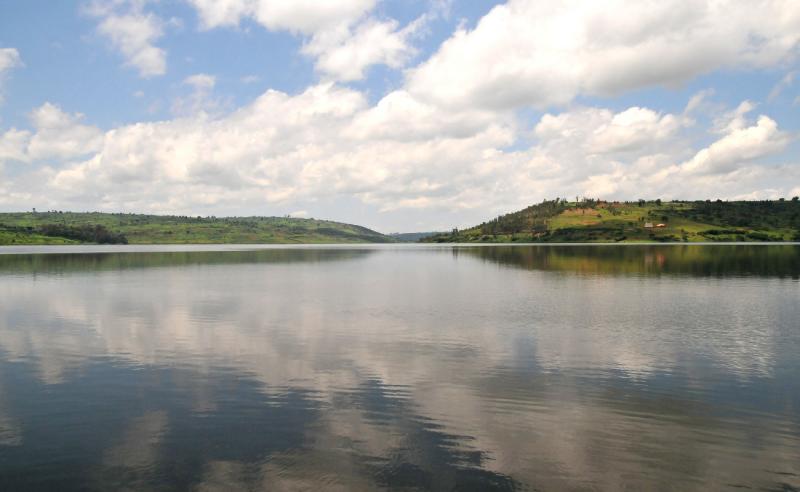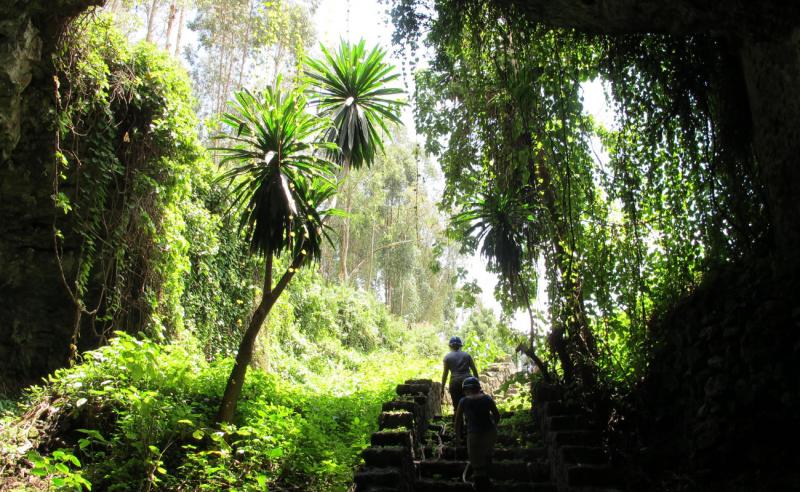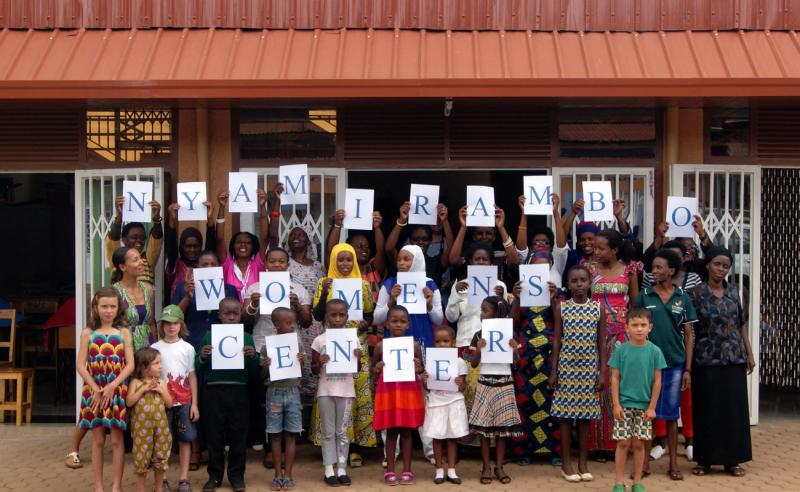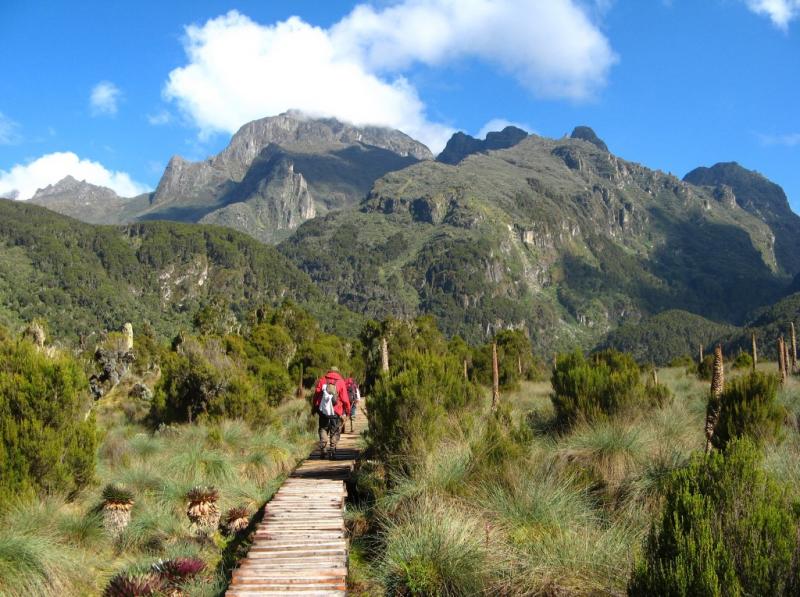- Home
- Attractions
- All Attractions
- ATTRACTIONS PROFILES
Kigali Genocide Memorial
The people of Rwanda embrace peace and reconciliation. They are committed to fight the ideology of genocide. The memorials found throughout the country are moving testimonies in memory of the 1994 Genocide against the Tutsi and the people who lost their lives. Inaugurated on the 10th anniversary of the Rwandan genocide, the Kigali Genocide Memorial at Gisozi is where 259,000 victims have been buried. This memorial also serves to educate about how the 1994 Genocide against the Tutsi took shape and examines genocide in the 20th century. Click here for more information.
The Kigali Genocide Memorial includes three permanent exhibitions, the largest of which documents the 1994 Genocide against the Tutsi. There is also a children’s memorial and an exhibition on the history of genocidal violence around the world. The education centre, gardens, and Genocide Archive of Rwanda contribute to a meaningful tribute to those who perished, and provide a powerful educational experience for visitors.
The memorial has five primary objectives:
- To provide a dignified place of burial for victims of the Genocide against the Tutsi
- To inform and educate visitors about the causes, implementation and consequences of the genocide, and other genocides throughout history.
- To teach visitors about what we can do to prevent future genocides.
- To provide a documentation centre to record evidence of the genocide, testimonies of genocide survivors and details of genocide victims.
- To provide support for survivors, in particular orphans and widows
-
Cultural Centre
-
Cultural Museum
-
Historical Museum
Nyungwe National Park
Located in the South West corner of Rwanda, Nyungwe National Park is an untouched natural rainforest that is filled with exciting biodiversity.
Covering over 1000 square kilomtres, Nyungwe is surely one of the world’s most beautiful and pristine mountain rainforests. It’s believed to be one of Africa’s oldest forests, staying green even through the Ice Age, which explains its diversity. Home to habituated chimpanzees and 12 other primates species (including a 400-strong troop of habituated Ruwenzori Black & White Colobus), it’s also a birder’s paradise with over 300 species, including 16 endemics, and is home to 75 different species of mammal.
This majestic rainforest is filled with nature and wildlife experiences for you to emerge yourself in. Hiking or even biking the beautiful terrain, tracking the famous chimpanzees, experiencing the canopy walk, witnessing beautiful birds, relaxing by waterfalls are just a glimpse of activities that Nyungwe offers. Sounds and views collaborate to create a one-of-a-kind wildlife experience. Exploring through the forest, travellers will witness the lush green mountains and cooling mist in a landscape that won’t be soon forgotten.
Cultural activities are also available around the forest.
Chimpamzee Tracking
The home of roughly 400 species of chimpanzees, Nyungwe is home to one of East Africa’s last intact populations and boasts two wild chimp communities that welcome guests (one in Cyamdungo and other around Uwinka). Thus, it’s not surprising that chimpanzee tracking is a popular activity in Nyungwe (especially when the park’s trees are in full bloom during the summer) as well-trained guides often lead visitors through the park’s forests. And while actually viewing chimpanzees is not guaranteed, you’ll enjoy learning about these creatures and their natural habitats from your guides. But you’ll probably have to get up around four a.m. to succeed in this very challenging activity as chimps are mostly likely to be seen early in the morning.
Other Primates
Chimpanzees are far from the only creature that will fascinate wildlife lovers in Nyungwe as with thirteen recorded species, the park is home to East Africa’s most diverse primate population. Nyungwe is the only location in Africa where you’ll find “supergroups” of more than 300 Colobus monkeys and one of the few places worldwide where you’ll see L’Hoest’s monkeys (primarily on the main round near Uwinka). Another rare animal you might also run into is the owl-faced monkey, an Albertine Rift endemic that inhabits Nyungwe’s southern forests. In fact, most of the monkey species found in the park are endemic.
If you’re interested in obtaining a permit for chimpanzee tracking, contact the Rwanda Development Board (RDB) at: reservation@rwandatourism.com.
Birding
Described by Birdlife International as “the most important site for biodiversity conservation in Rwanda,” the Nyungwe National Park is home to roughly 310 bird species, 27 of which are endemic to the Albertine Rift. Although actually spotting birds in the park’s forests may be challenging, the bird songs you’ll hear during the trek will surely make it more enjoyable. If you would like to learn about birds you might see and hear, book a guide for $50 U.S. at the headquarters of the Rwanda Development Board. The guides so knowledgeable about birdlife in Nyungwe they can identify birds by ear, such as the rwenzori turaco and grey-chested kakamega.
If you would like a permit to go birding in Nyungwe, contact the Rwanda Development Board at reservation@rwandatourism.com.
Canopy Walkway
Visitors to Nyungwe National Park can experience the rainforest from a new perspective: the Canopy Walkway. Hanging 60 meters above the forest floor between giant trees and towers, East Africa’s only Canopy Walkway provides a stunning view of the park’s amazing wildlife and nature. The Walkway is accessible as part of a specialized guided tour along the Igishigishigi trail or if you’re not part of a tour, hiking the Imbaraga or Umuyove trails.
Conducted year-round, the Canopy Walkway Tour costs $60 U.S. per person. All participants must be at least six years of age and children must be accompanied by adults. You should bring a raincoast as rain frequently falls in Nyungwe. But if you don’t come with a raincoat, you can rent one as well as walking boots and sticks.
Nyungwe’s steep landscape makes it as an ideal destination for hikers – whether they’re novices or experienced – as the park boasts an extensive network of hiking trails. The trails are blessed with an amazingly diverse landscape and represent the most scenic way of exploring the forest. The ones listed below are a must for travelers seeking a challenging, yet enjoyable experience:
- Congo-Nile Divide Trail: As the name suggests, you’ll get acquainted with two of the world’s most iconic rivers as this multi-day, 227 km trek curves alongside the Congo and the Nile. Geared towards experienced hikers, you’ll navigate through varied landscapes such as rainforests, bracken fields and bamboo forests during this trek. For those going on a multi-day trek, you don’t have to reserve a campsite (areas along the trail have been set aside for camping) but you do have to bring your own camping equipment. In addition, a number of shops that supply food and snack have been set up along the trail and there will be nowhere during the trek that you won’t be within 5-10 kilometers of refreshments.
- Igishigishigi Trail: A comfortable trek for novices, this 2.1 km hike will amaze you with its majestic views of the Canopy Trail and dazzling wildflowers. The Igishigishigi Trail can also be combined with the longer Imbaraga or Umoyove Trails.
- Karamba Trail: Another relatively easy hike, the Karamba Trail – located on the former site of a gold mine, market and army camp – is considered one of the best spots for birding in Nyungwe as it is flanked by numerous fern trees.
- Umugote Trail: This hike provides marvelous views of numerous ridges, rainforests, stunningly beautiful flowers and on a clear day, the Kibira National Park in Burundi. The trail is also a prime location for primate viewing and birding.
- Umoyove Trail: Also known as the Mahogany Trail, you’ll relax by a waterfall, take a strolll under some of the park’s tallest trees and savor the scent of aromatic leaves during this trek. In addition, the Umuvoye Trail provides access to several side trails used for chimpanzee viewing.
- Uwinka Trail: Although considered a difficult hike, this trail that takes you through rather lovely ravines is the perfect place to listen to early morning bird calls.
- Irebero Trail: This trail loops around two of the highest peaks in the park and provides views of Lake Kivu in Rwanda.
- Imbaraga Trail:Geared toward experienced hikers, the trail rewards hikers with the sight of four scenic waterfalls – any of them will be refreshing after trekking a little less than 10 km.
- Bigugu Trail: The highest peak in the park, this trail offers incredible flora and – on a clear day – views of Lake Kivu as well as hills and islands belonging to the Democratic Republic of the Congo.
- Isumo Trail: This trail takes you through verdant tea fields, a steep rainforest ravines and to top it off, the biggest waterfall in the Nyungwe National Park.
- Kamiranzovu Trail: Water enthusiasts will love this trail it features the park’s largest wetland, an acient swamp and brilliant waterfalls.
- Muzimu Trail: A relatively easy hike in the remote northeastern part of Rwanda takes your through pine and eucalyptus forests.
- Ngabwe Trail: Two paths lead hikers to the summit, which is a lovely picnic and camping site.
- Rukuzi Trail: This exhilarating hike provides outstanding chimpanzee spotting locations as well as views of Banda Village, from where you can hear children’s voices carrying up the mountainside.
Culture
As wonderful as exploring the diverse ecosystem of the Nyungwe National Park is, you really won’t get a feel for the area until you discover its rich culture. The region’s song, dance, music and cuisine are all integral parts of Nyungwe’s culture and walking tours of Banda Village – located 15 km down the mountain from the Uwinka Visitors Centre – represent the perfect setting for learning about an area where people have lived for more than 50,000 years. The tours provide guests the opportunity to participate in activities such as local food tasting and basket weaving and if you’re fortunate, you might able to attend a traditional wedding ceremony and learn about traditional medicine.
Community Based Tourism
The Wildlife Conservation Society (WCS) has collaborated throughout the years with local communities and leaders to find ways of conserving the beauty of Nyungwe through tourism development, awareness campaigns and policy development. In large part because of the hard work of many parties, Nyungwe was designated Rwanda’s third national park. The WCS and its partners have since created a network of moderate hiking trails, a canopy walkway and the region’s first interpretation center. The Rwandan government has also expressed its commitment to preservation by developing a park management plan with WCS that regulaties zoning for conservation, tourism and sustainable harvesting.
Conservation
The Wildlife Conservation Society (WCS) has collaborated throughout the years with local communities and leaders to find ways of conserving the beauty of Nyungwe through tourism development, awareness campaigns and policy development. In large part because of the hard work of many parties, Nyungwe was designated Rwanda’s third national park. The WCS and its partners have since created a network of moderate hiking trails, a canopy walkway and the region’s first interpretation center. The Rwandan government has also expressed its commitment to preservation by developing a park management plan with WCS that regulaties zoning for conservation, tourism and sustainable harvesting.
Vegetation:
Home of the largest block of montane forest in East Africa, the Nyungwe National Park boasts more than 200 different types of trees and 140 species of orchids (including eight that are endemic). The park contains numerous medicinal plants that have served as remedies for centuries, such as East African satinwood and California Bayberry.
-
Birding Site
-
Forest
-
National Park
-
Wildlife Conservancy
Akagera National Park
Akagera National Park is located in the north east of Rwanda along the border with Tanzania. Although founded in 1934, much of the park was re-allocated as farms and in 1997 the park was reduced in size from more than 2,500 sq km (nearly 10% of the surface area of Rwanda) to its current extent of 1,122 sq km. Since 2010, a joint venture with African Parks has seen Akagera return to its former glories.
It is named after the Akagera River that flows along its eastern boundary and feeds into a labyrinth of lakes of which the largest is Lake Ihema. The forest fringed lakes, papyrus swamps, savannah plains and rolling highlands combine to make Akagera amongst the most scenic of reserves anywhere in Africa. It has exceptional levels of biodiversity and forms the largest protected wetland in central Africa.
Akagera combines well with Nyungwe and the Volcanoes NP to offer a great safari element as it is home to many large plains game species as well as species restricted to the papyrus swamps such as the Sitatunga and the sought-after Shoebill Stork. Notable plains game include elephant, buffalo, topi, zebra, waterbuck, roan antelope and eland. Other antelope are duiker, oribi, bohor reedbuck, klipspringer, bushbuck and impala. Of the primates, olive baboons, vervets and the secretive blue monkey are seen during the day, with bushbabies often seen on night drives.
Of the larger predators leopard, hyena, side-striped jackal and lion, which was re-introduced last year are present. Plans are underway for the reintroduction of the black rhino too, and this will restore Akagera’s ‘Big 5’ status
Due to its wide variety of habitats, Akagera is an important ornithological site with nearly 500 bird species. The rare and elusive shoebill shares the papyrus with other rarities such as the exquisite papyrus gonolek and countless other water birds that inhabit the wetlands in large numbers.
More information can be found by emailing akagera@african-parks.org or by phone +250 (0) 782166015
Activities
Game Drives
The park management has vehicles avialble to hire for game drives, that come with their own driver and guide, and a choice of half day or full day drives.
However, it is also possible in Akagera to self-drive your own vehicle round the park. Guides are available to accompany you on your drive. The guides can direct you to areas where wildlife is most abundant and guide you to stunning scenic spots that you may otherwise miss.
There is a two-tier guiding system in the park with 10 park-employed guides and 15 community freelance guides. As a park visitor, and subject to availability, you may choose to take a park-employed guide who has guiding experience ranging from 2 to 12 years in Akagera National Park, and has undertaken training in content, interpretive guiding and first aid in the past 2 years. Or, you can choose one of the Community Freelance Guides, who are enthusiastic, fast learners. They have completed an in-house training and assessment programme. Both guides are dedicated to providing an authentic experience and support the success of the park. By choosing a freelance guide you are strengthening the relationship between the park and the local community, by stimulating economic development and allowing communities members living alongside the park to benefit from the tourism growth in Akagera.
Boats and Fishing:
If you are looking for a variation on the usual safari experience, a boat trip on Lake Ihema will not disappoint. Drift along the forest-fringed lake edge, past huddles of hippo and basking crocodiles. For the serious birder a boat trip is a must. Trips are scheduled 4 times per day at 7.30am, 9am, 3.30pm and 5pm. Non-scheduled, private, trips can also be arranged at other times.
Lake Shakani is the site of sports fishing in the park; spend a relaxing day fishing off the lake shore and then cook your catch over an open fire at the campsite.
Birding
Birding safaris are popular amongst regular visitors and the immense variety and abundance of species will not fail to impress. From the vast concentrations of waterfowl to the myriad of savanna species, there is never a dull moment, with more than 500 species recorded in Akagera. Serious birders can seek out several endemic species as well as rare gems such as the near threatened papyrus gonolek (Laniarius mufumbiri), which is restricted to papyrus swamps, the localised red-faced barbet (Lybius bidentatus) and the sought after swamp flycatcher (Muscicapa boehmi).
Fees
Entry fees for the park are USD $35 per person per day for international visitors and USD $25 per person per day for EAC residents. There is a charge of USD $7.50 per car. Children under the age of 12 are given a discounted price for entry fees and children under the age of 5 are admitted in free and also free of activities fee. Children over the age of 5 are charged the normal rates for activities.
If you would like to do a self-drive safaris, there is no need to book in advance. Cars are available for hire, all which includes the vehicle, driver and guide. The costs for the car hire are: US$175 for a Half Day (5 hrs) and US$275 for a Full Day.
Guides are available for hire from the reception and can join visitors on their self-drives. These guides are on a first come, first serve basis. Booking in advance is not necessary, unless it is for special groups such as school trips. Park-employed guides come at a rate of US$25 for a half day and US$40 for a full day. Community freelance guides are US$20 for a half day and US$30 for a full day.
Maps for the self-drives are available at the reception upon arrival for 1,000 Rwf and guidebooks for 2,500 Rwf. An information Center to assist with activities is also available and can advise clients on which routes will be best for them. Tourists are recommended to spend a full day in Akagera to be able to see the best of the park.
Other activity fees:
- Night Game Drive (per person, 2.5 hrs): US$40
- Fishing (per person per day, own equipment): US$20
- Boat Trip (per person, morning or day, 1 hour): US$30
- Boat Trip (per person, sunset, 1 hour): US$40
- Behind the Scenes TOur (per person, 1.5 hours): US$20
-
Birding Site
-
Boating
-
National Park
-
Wildlife Conservancy
Karongi
Lake Kivu is surrounded by magnificent mountains and has deep emerald green waters. The lake covers a total surface area of 2,700 km and stands at a height of 1,460 meters above sea level.
About 110km from Kigali, the road to Karongi is paved and in good condition.
Karongi is one of the most relaxing and romantic places in Rwanda, and is an ideal place to enjoy lakeside recreation. A picturesque lakeside resort town, there are ample beaches with crystal clear water. Along with modern water sport facilities, traditional boats can be used for exciting nature discovery tours and authentic experiences within local Rwandan daily life. Visitors can take boat rides from many of the local hotels visiting Napoleon’s Island (home to a colony of fruit bats) and dine at the Amahoro Island restaurants and even go night fishing with locals
Adventure awaits at Karongi with opportunities to hike and bike the Congo Nile Trail, visit the Congo Nile Divide watershed, have a taste of the ‘crop to cup’ coffee and tea experiences within the local community, or visit the moving Bisesero Genocide Memorial with breathtaking views of the lake.
Attractions:
Amaharo Island
Amahoro Island is accessible on a boat trip and is a wonderful place to relax. There is a restuarant on the island and it’s possible to swim, play volleyball and camp, or talk a walk around teh rocky northern part of the island. Alternatively, a boat ride to Napolean’s Island will reveal a colony of thousands of fruit bats and a large number of birds.
Coffee and Tea Plantations
The high mountains, cool climate and rich volcanic soil result in the award winning quality of the Rwanda’s coffee and tea. Expereince the growing and production process at one of the many plantations found in the Karongi region. Visit the nursery to see the small saplings and then watch as the expert plantation workers delicately prune, pick, wash and dry the leaves and berries. After you’ve seen the hardwork and skill that goes into cofee and tea production, sit down and enjoy a tasting of tantalizing blends.
The best time to visit plantations is May to August.
Below is a list of some of the most well-recognized plantations in Karongi:
- Karongi Tea Factory
- Pfunda Tea Estate
Congo Nile Trail
The Congo Nile Trail is a trail along Lake Kivu that extends from Rubavu, continues through Rutsiro via the Karongi and Nyamasheke districts and ends at Rusizi District.
227 km (141 miles) of beautiful landscapes, including rolling hills and clear water. The entire trek can be completed in a 10- day hike. However, the trip can be done in sections if travelers do not have the time to complete the entire trail. Trails give stunning views of the Lake Kivu coastline and offer adventurous travelers an exciting way to discover Rwanda.
Biking the Congo Nile Trail can be completed in 5 days, with rich views and immersive cultural experiences along the way. This trail appeals to adventure travelers and is a great way to experience Rwanda. The trail can also be split up if visitors do not have the time to commit to the 5 day journey. However, it is an experience worth selling to those who crave an off the beaten path adventure. Rwanda’s caves date back 65 million years and lie withing the volcanic region where lava flow layers long ago created the Albertine Rift Valley.
Bisesero Genocide Memorial
One of the most moving and evocative of Rwanda’s genocide memorials, at Bisesero nine small builodings represent the nine communities that made up the province of Kibuye. This was the area that saw paerhaps the greatest resitsance to the genocide forces.
-
Forest
-
Lake or River
-
Lake or River
Presidential Palace
The Presidential Palace, residence of the former president of Rwanda, President J. Habyarimana - is near the airport on the eastern outskirts of Kigali. Habyarimana was the president whose plane was shot down on the 6th April 1994, the event that some say triggered the Rwandan Genocide. The former state house is now a museum that gives an overview of Rwanda’s history and a visit to the remains of the Falcon 60 presidential jet that are housed in a walled garden on the property
-
Cultural Museum
Kandt House Museum
Kandt House Museum, the former Natural History Museum is located at KN 90 St, around one kilimiter from downtown. This museum is formerly well known as Natural History Museum (NHM). Its name as NHM was changed into Kandt House Museum since December, 17th 2017.
At the present moment, Kandt House Museum comprises three main parts:
- The first part presents Rwandan life in all its aspects (social, economic, and politically: monarchism) before the colonial period.
- In the second part, which is the biggest one, the museum traces experience of Rwandan people during the colonial period, more specifically under the German rule from 1884 (the time of Berlin conference), throughout colonial administration, World War I, few to mention; up to 1916, including Richard Kandt life and his deeds in Rwanda. Another attractive gallery is the third part where the history of Kigali; Kigali before colonial time, during colonial, and its naissance as capital city, is well presented.
- Last but not least, it is the only remaining mark of the former Natural History Museum, that is; a temporary exhibition of live snakes, and a baby crocodile (measured 1 m in 2017). While visiting this external part, one can enjoy the view of spectacular surrounding scenery, most importantly, stunning view of Kigali, Shyorongi, and Jari mountains.
-
Cultural Centre
-
Cultural Museum
National Liberation Park Museum
National Liberation Park Museum Known as “Umurindi w'intwari”.
In the Northern Province of Gicumbi district, 80 kilometres northeast of Kigali at Mulindi w’Intwali lies the National Liberation Museum Park. This museum tells the story of the Rwandan Liberation struggle that brought an end to the Genocide against Tutsis. This struggle was initiated by the political wing known as the Rwandan Patriotic Front (RPF), led by its military wing, Rwandan Patriotic Army (RPA), from 1st October 1990 to 4th July 1994.
The museum illustrates sequence of events before, during, and after the struggle through visuals that include texts and artefacts. One of the objects exhibits the bunker which protected the then Chairman of High Command, now President of the Republic of Rwanda, H.E Paul Kagame. Other objects embody the Arusha Agreement, the Campaign against Genocide, radio Muhabura used by the RPF and RPA for mobilisation, likeminded events as well as initiatives. Visitors are always fascinated by the longstanding bunker that sheltered H.E Paul Kagame along other officials’ bunkers.
We are currently going through the consultancy period on the construction of the Liberation Park museum. Consultation will be within Rwanda and directed to the people of Rwanda. The foundation stone was laid by H.E the President of the Republic of Rwanda at “Umurindi w’intwari”.whilst the place is being visited.It is one of 8 sites we have as Instittute of National Museums of Rwanda.
-
Cultural Centre
-
Cultural Museum
Rwanda Art museum
The “Rwanda Art Museum” in Kanombe is located in 4 kilometers from Kigali International Airport. This former Presidential Palace Museum changed into Rwanda Art Museum effective from 18th May 2018.
The new museum displays contemporary artworks produced by both Rwandan and international artists. The aim is to provide to our visitors’ insight into the originality of Rwandan creativity, arts development from centuries up-to-date, whilst not overlooking traditional or modern imaginations.
A part from permanent exhibition, The Rwanda Art Museum hosts temporally and moving arts exhibitions as well. Young visitors also enjoy the Art Kids’ Studio where they are given the opportunity to put their art skills to work. We want the museum to be a place where artists meet and exchange ideas. In this line, a room for them to exhibit their artworks has been provided by the INMR to their Federation.
As this current museum served as the Presidential Palace during 1970s until late 2000, our visitors can visit this historical building. The flight debris from the FALCON 50’s presidential jet that went down on 6th April 1994 are also found at this heritage site.
-
Art Gallery
-
Cultural Museum
Lake Muhazi
Have the water all to yourself at Rwanda’s ‘other’ lake.
Even though it’s only slightly more than 40 kilometres east of Kigali, the winding shores of Lake Muhazi see few visitors (and of these, most tend to be locals and expats escaping the city for a weekend), but the region has a laid-back, subtle charm all its own, and with such easy access from Kigali, there’s really no reason not to explore the winding shores and placid waters of Lake Muhazi.
Long and shallow, Lake Muhazi twists and turns its way through a flooded valley for more than 40km before reaching its eastern shore, not far from the northern exit of eastern Rwanda’s crown jewel, Akagera National Park. The east end of the lake sits right along the road to Nyagatare, and makes for a perfect place to break the journey for a meal and a cold drink after long hours spent bumping along the park’s dirt roads. If you stick around after your fresh-caught lunch and let the lake breezes guide you, you’ll quickly find that the live music at the lakeside bars, dozens of traditional villages along the shore, and the fantastic birding and fishing on offer will keep you here well longer than expected.
The hilltop town of Gahini sits just opposite the lake’s east end and is a great place to soak up a bit of small-town Rwandan life, especially if you’re here on a Sunday, when services at the historic Gahini Anglican Cathedral can be heard from all around. Most people in Gahini and other villages around the lake are either farmers or fishers, so don’t be surprised to see herds of the long-horned Inyambo cows around every bend. No trip to the lake is complete without getting out on the water, and any of the low-key guesthouses that dot the lakeshore can help set up fishing and birding expeditions up and down the lake.
Wildlife lovers should keep their eyes out for a glimpse of the Spotted-necked otter, while dedicated ornithologists can expect to check off the African fish eagle, Malachite kingfisher, Pied kingfisher, Swamp flycatcher, and many more.
Though it’s only some 50km long east to west, there are more than a dozen meandering offshoots branching north and south of Lake Muhazi’s wide central valley, and there are miles and miles of tranquil agricultural villages and green, unspoilt coastline on either side of the lake simply waiting to be explored. If you’ve got a 4×4, the little-travelled dirt roads north of the lake take you through a lacustrine agricultural Eden, where the terraced hillsides tumble down to the water’s edge, and there’s a lake vista around every bend.
The two largest towns near the lakeshore are Gahini and Rwesero, and both have a couple guesthouses where you can arrange a variety of aquatic activities. Fishing, birding, and boating trips are a highlight of any trip to Lake Muhazi, but there’s always plenty of space for a cool dip just offshore if you don’t have time to get out on the water. Back on dry land, there’s no shortage of hot food, cold drinks, and irresistible hammocks to keep you occupied. Religion and history buffs won’t want to miss the brick-built Gahini Anglican Cathedral either. It dates to 1975 and still towers over the low-slung rooftops of Gahini, drawing in thousands of parishioners and pilgrims every year.
-
Lake or River
-
Lake or River
Musanze Caves
Formed by centuries of geologic activity centred around the Virunga volcanoes next door, the 1.25-mile long Musanze caves are located just outside of the town they share a name with, and are only a 90-minute drive from Kigali. With an enormous opening (and an equally huge number of bats resident inside), the greenery outside spilling over into the twilight within makes for a fantastic photo op. Though today they’re a tourist attraction, the caves were used as a shelter during wartime for many centuries leading right up into the modern era, and as such, it’s an important site to local people.
Thus, out of respect for the area’s residents, access is limited to guided visits. Expert guides lead every tour, and they can explain the history of the caves from their formation to present day. The tours make an excellent add-on activity for the afternoon after you’ve seen the gorillas, take about 2.5 hours, and can be done at any time throughout the year.
Bookings and tours can be arranged at any RDB office, or by contacting our reservation office at reservation@rwandatourism.com
-
Volcano
Nyamirambo Women’s Center (NWC)
Nyamirambo Women’s Center (NWC), a Rwandan NGO, was launched at the end of 2007 by 18 Rwandese women living in Nyamirambo, Kigali. Together they created a project which aimed to address gender-based violence, gender inequality and discrimination. Today, NWC’s mission is to provide education and vocational training to women who do not have the means to pay for such training on their own, so that they can gain better opportunities for employment.
In pursuing this mission, NWC has 3 overall objectives:
- To strengthen the institutional and organizational capacity of NWC
- To promote and empower women through capacity development and employment
- To promote women and community-based tourism
- To fulfill the mandate of these objectives, NWC offers free classes in literacy, English, basic computer skills, handicrafts and sewing, empowerment trainings on gender based violence and trainings on responsible community based tourism.
At the end of 2013 NWC launched the product line “Umutima,” which means “heart” in Kinyarwanda. With this project, NWC trains and employs women from the community to create a large variety of women’s accessories, children’s clothing, and home decor products. At the moment there are over 50 women employed by Umutima as seamstresses. Umutima and NWC have grown into a unique, self-sustaining model where the profits earned through Umutima are used to fund NWC initiatives, in addition to providing benefits and a fair wage to the seamstresses.
NWC is also sustained by income generated by the increasingly popular tourism offerings in Nyamirambo. Adhering to the principles of Responsible Community Based Tourism (CBT), these tours give tourists a uniquely personal insight into everyday life and local social culture. Also as a part of their CBT initiative, the Center offers basket weaving and traditional cooking workshops.
Finally, at the beginning of 2014 a small community library across the street from NWC was inaugurated, offering books in Kinyarwanda, English and French. The idea behind the library is to encourage reading among the youth in Rwanda and to promote the idea of “one child, one book” in a country where many children do not have the opportunity to read and discover the world through books.
-
Art Gallery
-
Cultural Centre
Rwenzori Mountains National Park
Summary
- Size: 996km2
- The park was gazetted in 1991 and was recognized as a World Heritage site in 1994 and Ramsar site in 2008.
- Highest point: 5,109m above sea level on Mt Stanley's Margherita Peak. Mt. Stanley is bisected by the border with the DR Congo.
- The Rwenzori is not volcanic like East Africa’s other major mountains but is a block of rock upfaulted through the floor of the Western Rift Valley.
- The Rwenzoris were christened the "Mountains of the Moon" by the Alexandrine geographer Ptolemy in AD 150.
- The explorer Henry Stanley placed the Rwenzori on the map on 24th May 1888. He labeled it ‘Ruwenzori’, a local name which he recorded as meaning “Rain-Maker” or “Cloud-King.”
- The oldest recorded person to reach Margherita Peak was Ms Beryl Park aged 78 in 2010.
The Rwenzoris – the fabled Mountains of the Moon – lie in western Uganda along the Uganda-Congo border. The equatorial snow peaks include the third highest point in Africa, while the lower slopes are blanketed in moorland, bamboo and rich, moist montane forest. Huge tree-heathers and colorful mosses are draped across the mountainside with giant lobelias and “everlasting flowers”, creating an enchanting, fairytale scene.
Rwenzori Mountains National Park protects the highest parts of the 120km-long and 65km-wide Rwenzori mountain range. The national park hosts 70 mammals and 217 bird species including 19 Albertine Rift endemics, as well as some of the world’s rarest vegetation.
The Rwenzoris are a world-class hiking and mountaineering destination. A nine- to twelve-day trek will get skilled climbers to the summit of Margherita – the highest peak – though shorter, non-technical treks are possible to scale the surrounding peaks.
For those who prefer something a little less strenuous, neighboring Bakonzo villages offer nature walks, homestead visits home cultural performances and accommodation, including home-cooked local cuisine.
Areas of Interest
Equatorial snow peaks
The high Rwenzori comprises six distinct mountains. Although located just miles north of the equator, the highest of these - Mounts Stanley (5,109m), Speke (4,890m) and Baker (4,843m) - all bear permanent snow and glaciers. The snow peaks can be reached by hiking the Central Circuit and Kilembe Trails.
Land of the Triffids
The misty, boggy, glacier-carved valleys of the high Rwenzori form a strange botanical world inhabited by triffid-sized forms of lobelia, heather and groundsel, crisp "everlasting flowers," garishly coloured mosses and gnarled trees draped with curtains of lichen. The result is an otherworldly setting which, over the years, has been compared to the forests of the Jabberwock, the Seven Dwarves and, inevitably, Tolkein’s Middle Earth. These strange plants rank among the world’s botanical treasures, being found only on the highest mountains of East Africa.
Lakes
There are over 20 lakes in Rwenzori Mountains National Park. The lowest and most accessible is Lake Mahoma (2,651m) in the bird-rich forest of the Central Circuit. The beautiful Lake Bujuku lies at the head of the deep, glacier carved Bujuku valley in the shadow of Mounts Stanley, Baker and Speke. In the Nyamwamba Valley, ascended by the Kilembe Trail, dams created by glacial moraine have created a string of eight delightful lakes. Several rivers and streams orginate from the mountain, forming lifelines for the flore and flora in the flood plains and supporting local communities.
Ruboni
Ruboni, found at the southeastern foot of the Rwenzori Mountains, is the trailhead for the seven-day Central Circuit to the high peaks. It is also the starting point for hill walks, bird and nature treks and walks through the traditional homesteads of the local Bakonzo community. Accommodation catering for a range of budgets offers gorgeous mountain views up the Mubuku valley.
Visitor Information Centre
Until the new Visitor Information Center is complete, all information regarding park activities will be available at Rwankingi Park Headquarters (close to Ruboni Community Camp), at the trailheads and the offices of the Rwenzori tour operators. Guides and porters, along with trekking equipment, can be booked by visitors at these locations.
Bulemba
Bulemba houses the remains of Rwenzururu’s first King, Isaiah Mukirania Kibanzanga, who is believed to have saved the Bakonzo tribe from the Batooro oppression. Each year on 2nd September, every Mukonzo attends the pilgrimage to this sacred site to make sacrifices.
Wildlife and Birding
Wildlife
The park is home to 70 species of mammal, including six Albertine Rift endemics; four are endemic to the park and three are rare species. Other mammals include the elephant, chimpanzee, Rwenzori otter and leopard. Though wildlife is difficult to spot in the dense forest, do look out for primates such as colobus (Angola and black-and-white varieties are both present) and blue monkeys; small antelope such as bushbucks; and unusual reptiles such as the three-horned chameleon.
Vegetation
Rwenzori Mountains National Park is known for its distinctive flora rather than its fauna. On the route to the peaks, hikers climb through a series of distinct altitudinal vegetation zones; montane forest, bamboo, tree heathers and afro-alpine. The latter, with its emblematic giant forms of Senecio (groundsel) and lobelia, is one of the world’s rarest botanical communities, being limited to East African mountains above 3800m.
Birds
The park is home to 217 bird species including several Albertine Rift endemics. Among these are 17 species that are endemic to the park making Rwenzori an important birding area (IBA). The forest zone at 1800m contains a diversity of birds including the Rwenzori Turaco, Barred Long-tailed Cuckoo, Long-eared Owl, Handsome Francolin, Cinnamon-chested Bee-eater, Archers’ Robin-chat, White-starred Robin, Rwenzori Batis, Montane Sooty Boubou, Lagden’s Bush Shrike, Slender-billed Starling, Blue-headed Sunbird, Golden-winged Sunbird, Strange Weaver and several varieties of Barbets, Greenbuls, Apalises, IIladopsis, Flycatchers and Crimsonwings.
-
Birding Site
-
Forest
-
Mountain Climbing
-
National Park
-
Wildlife Conservancy
.jpg)
.jpg)
.jpg)
